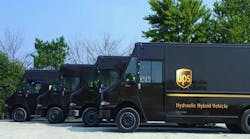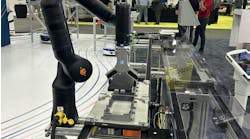United Parcel Service Inc. (UPS), the largest package-delivery company and provider of supply-chain management solutions, announced that it has placed 50 Lightning Hybrids delivery trucks in the Chicago metro area. The hybrid systems were partially funded by Drive Clean Chicago, a program that aims to accelerate the adoption of alternative-fuel vehicles and infrastructure in Chicago.
In August 2016, UPS achieved its goal of driving 1 billion miles in its alternative-fuel and advanced-technology fleet. By employing this new technology, UPS hopes to set a new record in sustainable delivery services, and anticipates a one- to two-year return on investment (ROI) on its hybrid vehicles.
The hybrid system by Colorado-based Lightning Hybrids converts Freightliner MT-55 trucks with gasoline engines into cleaner and more fuel-efficient delivery trucks, providing additional torque and reducing engine stress on the vehicles. The system also permits UPS trucks to keep their gasoline engines, rather than replace them with diesel engines to reduce NOx emissions, which can be an expensive proposition.
“We are pleased that our hydraulic hybrid is part of UPS’s Rolling Laboratory, which represents world-class sustainable vehicle technologies,” says Tim Reeser, CEO of Lightning Hybrids. “We will show such a compelling ROI from these systems that we expect UPS to adopt our product on a worldwide scale. This order, along with other larger customer orders, has allowed us to reduce our price substantially, further improving ROI, making it viable even in cases without government subsidies. It is exciting to be part of their efforts to serve their customers with vehicles that support clean air in urban communities.”
The system is a patented, parallel hydraulic-hybrid system that eliminates the need for electric batteries, while providing safer braking with reduced emissions. The driveline incorporates a hydraulic pump and a lightweight accumulator to brake the vehicle and then send that braking energy to hydraulic accumulators, where the energy will be stored. This regenerative energy is subsequently used to provide power to the wheels and increase acceleration power.
In 2014, UPS trialed the Lightning Hybrids with a six-month pilot program that demonstrated 100% uptime of the hybrid system, along with efficiency gains ranging from 18% to 34% and uncompromised drivability. UPS is currently conducting trials in the U.K. to eventually implement the hybrid systems.
Lightning Hybrids designs and manufactures the hydraulic hybrid Energy Recovery System (ERS) for medium- and heavy-duty fleet vehicles. The composite hydraulic accumulators are a fraction of the cost and weight of batteries. The system can be installed on new vehicles as well as retrofitted on vehicles already in service. It is sold through a network of dealers and upfitters.
For more information, go to www.lightninghybrids.com, or email Bonnie Trowbridge at [email protected].

